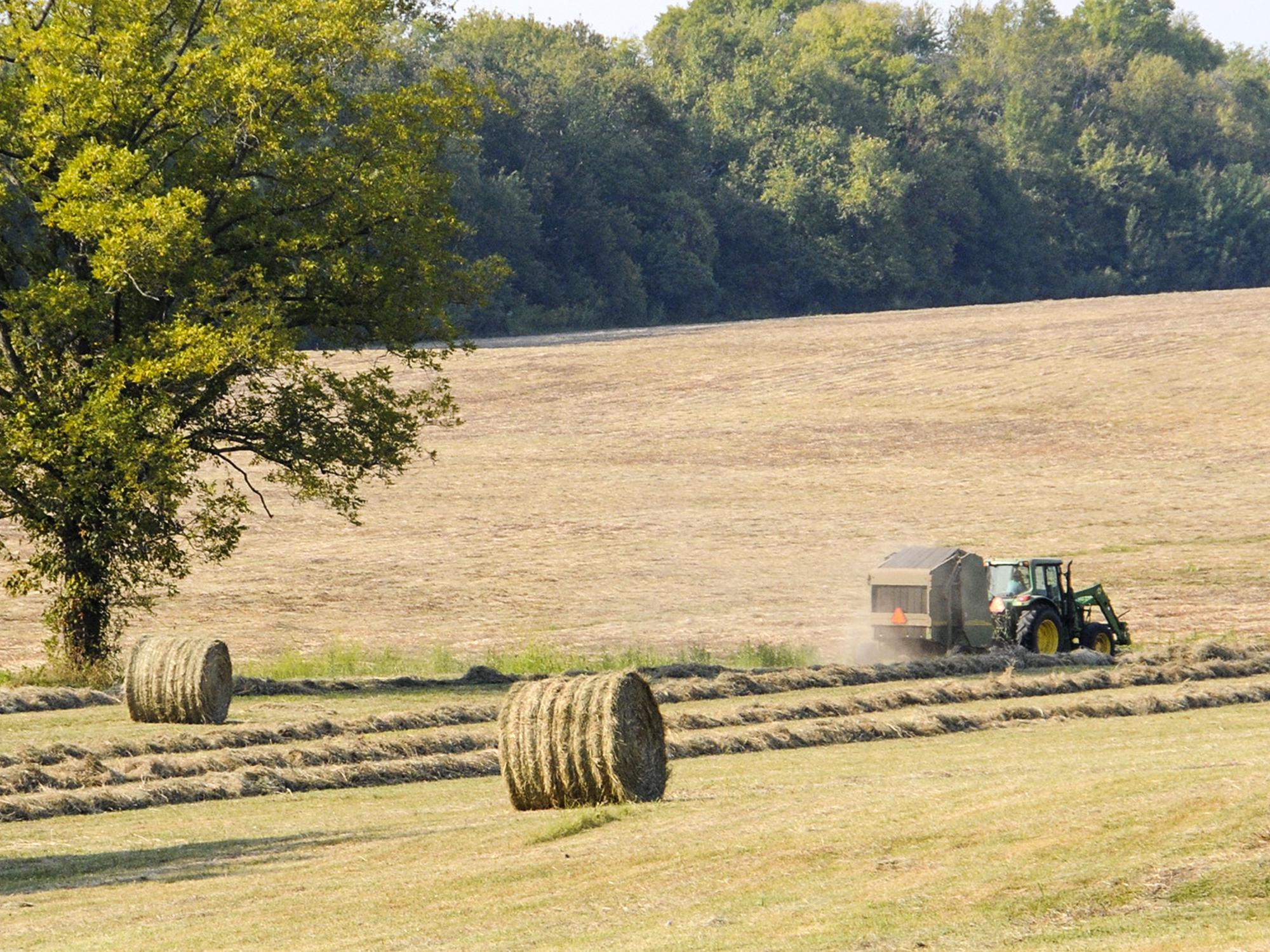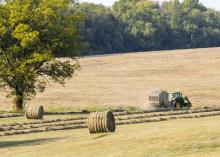Information Possibly Outdated
The information presented on this page was originally released on September 19, 2014. It may not be outdated, but please search our site for more current information. If you plan to quote or reference this information in a publication, please check with the Extension specialist or author before proceeding.
State 2014 hay production may not satisfy demand
MISSISSIPPI STATE -- High demand for hay last winter, a wet spring and heavy insect pressure have all challenged the state’s pastureland, which means hay may be scarce this winter.
Rocky Lemus, forage specialist with the Mississippi State University Extension Service, said these factors pushed the state’s hay inventories 20 percent lower than the three-year average.
“The state had about a 10 percent loss in forage stands from a combination of cold weather and low soil nutrients, especially potassium, to help plants and root systems cope with cold weather,” Lemus said. “Hay stocks were low coming into the summer, and we have only had three hay harvests this year.”
The first cutting of the year was delayed by two weeks because of cold, wet weather. More recently, hot, dry weather limited pasture growth.
“There will be hay available to sustain on-farm feeding, but the hay inventory for commercial sale is very low at this point,” Lemus said. “Extreme cold temperatures during the last few winters have decreased the grazing potential of annual ryegrass or small grains, leaving producers scrambling for extra hay to meet the daily feeding requirements of their cattle.”
John Michael Riley, Extension agricultural economist, said hay stocks remain limited, and poor 2014 production will keep supplies tight moving into winter.
“Rains and insect pressure from armyworms have current hay production estimates for Mississippi at 1.38 million tons, their lowest since 2000,” he said.
Riley said he expects demand for hay this winter will be above average because of the limited supplies coming into the growing season and less-than-ideal summer production.
In 2013, hay production was valued at $157 million, which was 25 percent higher than the five-year average value. Hay is mostly sold locally, and prices vary widely.
“Hit-or-miss rains can make supply in one spot very different from another,” Riley said. “In general, recent hay prices have ranged from $40 to $120 per ton.”
As the weather starts to turn cooler, summer perennial grasses decrease forage production and producers start to plant annual ryegrass for winter grazing.
“Although stockpiled forages could be an alternative to close the gap until ryegrass is ready for grazing, producers rely heavily on hay to accomplish this task,” Lemus said.
Lemus urged producers preparing for annual ryegrass planting to remember that high humidity coupled with cooler temperatures can allow blast to develop and affect new seedlings. There is management help from a new fungicide labeled for blast control in forages.
Tracy Robertson, Carroll County Extension coordinator, said hay producers in her area were trying to get in one more cutting in mid-September.
“Pasture conditions have become dry and dusty as grass continues to become brittle and slow-growing without rain,” Robertson said. “We’re hoping for some rain soon to help the grass green up and grow a little more for the cattle and livestock that we have.”
The U.S. Department of Agriculture reported on Sept. 14 that 92 percent of the state’s hay crop had been harvested. Of this, they projected that 10 percent was in excellent condition and 83 percent in fair or good condition.
Blake Layton, Extension entomologist, said armyworm populations have been high in Mississippi since early June and caused significant loses in bermudagrass hay fields. Central and south Mississippi were the hardest hit.
“We’re to the point now where it’s so late in the year that it’s not a huge issue in bermudagrass hayfields,” Layton said. “The key caution is for those who are planting winter grazing to watch closely. Sometimes when there have been heavy populations of armyworms on hay fields, they can hang around, and if it’s warm enough, they can damage the seedling winter grazing grass that people are planting right now.”
Layton urged producers to address fall armyworm problems as soon as they appear.
“A heavy infestation can defoliate a field just before it is time to cut,” he said. “They are less of a threat to pastures, but they can sometimes cause problems. Per acre cost of control is less than the value of one or two square bales of hay, but losses to heavy infestations that go untreated can approach 100 percent.”





